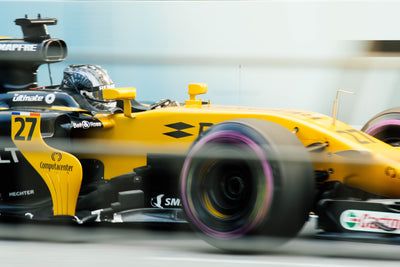On all US Domestic orders.

The Unsung Hero: Understanding the Importance of Motorsport Racing Seats
By Matt Lambert at rightmotorsport.com
Introduction
When it comes to the world of motorsport racing, drivers and teams often focus on high-performance engines, aerodynamics, and other technical aspects of the car. However, one crucial factor that is often overlooked but can significantly impact a driver's performance is their racing seat or "bucket seat”.
A properly fitted and comfortable seat not only enhances safety but also plays a vital role in driver endurance, reducing fatigue, and maximizing control.
In this article, we will delve into the importance of a racing seat, including its effects on driver performance, safety considerations, and optimal driving position. We will also provide examples of entry-level, medium-range, and high-end bucket seats to cater to different needs.
Comfort and Endurance
A well-designed racing seat ensures driver comfort, which is of paramount importance in endurance racing and long-duration events. Endurance and longer sprint races require drivers to remain focused and perform at their best for extended periods. An uncomfortable seat can lead to driver fatigue, impacting concentration, reaction times, and overall performance.
A racing car seat with proper padding and ergonomic support reduces fatigue by minimizing pressure points and providing optimal body alignment. It helps distribute forces evenly during cornering, braking, and acceleration, allowing drivers to maintain their concentration and stamina throughout the race.
It may sound silly, but sitting in the seat in a shop showroom or getting advice from other owners of the same style chair may be beneficial before purchasing. A driver's height, weight and width will have an effect on which might be best to choose.
Hans Devices
As many new motorsport regulations stipulate the use of a Hans device for competition, you must ensure your seat is Hans or neck-brace compatible. Many modern seats will now come with this as standard, however, many old seats and the rare new seat will not be suitable for the use of a neck brace.
The usual giveaway signs are an extrusion or dent in the rear of the seat towards the top where your Hans device would rest if you were to sit in the car with your helmet and Hans device fitted.
This may not however always be the case, so, be sure to check the labelling on the seat and any information provided with the seat when new.
Safety Considerations and Seat Belt Compatibility
Safety is a top priority in motorsport, and racing car seats are an integral part of a driver's protection system. A well-designed racing seat ensures that the driver remains securely positioned, reducing the risk of injury in the event of a crash. The seat's structural integrity and side bolsters help restrain the driver's body, preventing excessive movement and reducing the likelihood of injury.
It is essential to combine a racing car seat with a high-quality set of seat belts, such as a multi-point harness system. The seat and seat belts work together to provide optimal protection and minimize the risk of injury during high-impact situations.
For more information about seatbelts, check out our other articles!
Optimal Driving Position
An optimal driving position contributes massively to improved control, precision, and reduced driver fatigue. The racing car seat plays a crucial role in achieving this position.
Ideally, the driver's arms should be almost fully extended when at the top of the steering wheel, with a slight bend at the elbow. This positioning provides maximum leverage and control over the steering inputs without the risk of locking out your arms.
If you can fully lock out your elbows at full reach, then the seat is positioned too far away. Locking your arms can create a significant risk when in a collision, causing damage to the shoulders.
Additionally, the pedals should be positioned so that the driver's leg is not fully extended when fully depressing the pedals. The distance should allow for controlled pedal movements using the bend in the knees rather than relying solely on ankle movements. This position reduces strain on the driver's legs and allows for quick and accurate pedal modulation.
Entry-Level, Medium-Range, and High-End Racing Seats

Entry-Level: The OMP FIRST-R Fiberglass Shell Racing Seat is a cost-effective option priced at $589. It provides essential safety features, comfortable padding, and optimal support for beginners or those on a limited budget.

Medium-Range: The OMP HRC-R Fiberglass Shell Race Seat, priced at $979, offers a balance of safety, comfort, and performance. It features improved side bolstering and ergonomic support, making it suitable for intermediate-level racers.

High-End: The OMP HTE EVO Carbon Shell Racing Seat, priced at $3,999, represents the pinnacle of racing seat technology. It provides advanced safety features, enhanced comfort through premium materials, and superior body support for professional racers or enthusiasts seeking the highest level of performance. It is also one of the lightest seats available today.
Conclusion
In the realm of motorsport racing, every detail counts, and the racing seat is an often overlooked but vital component. It directly impacts driver comfort, endurance, and safety. A well-designed seat reduces fatigue, enhances control, and improves concentration throughout a race.
Be sure to view our entire range at Fast Racer, paying close attention to fitment information and dimensions to ensure a proper fit for both you as a driver and the seat into the car.


Leave a comment